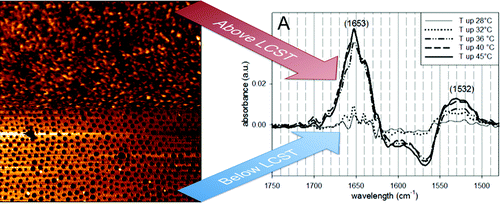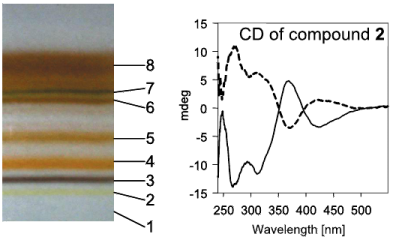-
Dynamic Perspective on the Function of Thermoresponsive Nanopores from in Situ AFM and ATR-IR Investigations
A.M. Popa, S. Angeloni, T. Bürgi, J.A. Hubbell, H. Heinzelmann and R. Pugin
Langmuir, 26 (19) (2010), p15356-15365


DOI:10.1021/la102611k | unige:14783 | Abstract | Article HTML | Article PDF

This article describes the morphological and chemical characterization of stimuli-responsive functionalized silicon surfaces provided in parallel by atomic force spectroscopy (AFM) and Fourier transform infrared spectroscopy (FT-IR) enhanced by the single-beam sample reference attenuated total reflection method (SBSR-ATR). The stimuli-responsive behavior of the surfaces was obtained by grafting-to in melt carboxyl-terminated poly-N-isopropylacryl amides (PNIPAAM) with different degree of polymerization (DP) on epoxide-functionalized silicon substrates. The unprecedented real time and in situ physicochemical insight into the temperature-triggered response of the densely packed superficial brushes allowed for the selection of a PNIPAAM with a specific DP as a suitable polymer for the fabrication of silicon membranes exhibiting switchable nanopores. The fabrication process combines the manufacture of nanoporous silicon surfaces and their subsequent chemical functionalization by the grafting-to in melt of the selected polymer. Then, relevant information was obtained in what concerns the chemical modifications behind the topographical changes that drive the functioning of PNIPAAM-based hybrid nanovalves as well as the timescale on which the opening and closing of the nanopores occur.
